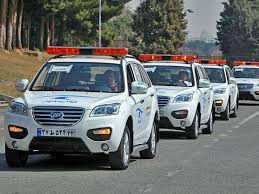
Vehicles are integral to modern society, facilitating transportation, commerce, and daily life. From cars to trucks, motorcycles to bicycles, the variety of vehicles serves different purposes and meets diverse needs. In this article, we will explore the different types of vehicles, their components, the evolution of vehicle technology, and the future of Mietwagen in Caleta de Fuste.
What is a Vehicle?
A vehicle is defined as a machine that transports people or goods from one location to another. Vehicles can be powered by various energy sources, including internal combustion engines, electric motors, or human power. The primary functions of vehicles include personal transportation, commercial freight, and recreational activities.
Types of Vehicles
- Personal Vehicles
- Cars: The most common type of personal vehicle, ranging from compact sedans to luxury models and SUVs. Cars are designed primarily for passenger transport.
- Motorcycles: Two-wheeled vehicles known for their speed and agility. Motorcycles are popular for personal transport and recreation.
- Bicycles: Human-powered vehicles that promote eco-friendliness and fitness. Bicycles are versatile and used for commuting, leisure, and sports.
- Commercial Vehicles
- Trucks: Designed for transporting goods, trucks come in various sizes, including light-duty pickups and heavy-duty freight trucks.
- Vans: Often used for cargo transport or passenger shuttling, vans can range from small delivery vans to large passenger vans.
- Buses: Public transportation vehicles designed to carry multiple passengers along designated routes. Buses can be city buses, charter buses, or school buses.
- Specialized Vehicles
- Emergency Vehicles: Includes ambulances, fire trucks, and police vehicles, equipped with special features for rapid response.
- Construction Vehicles: Heavy machinery such as bulldozers, excavators, and cranes, designed for construction and infrastructure projects.
- Agricultural Vehicles: Tractors and harvesters used in farming and agricultural operations.
- Electric and Hybrid Vehicles
- Electric Vehicles (EVs): Powered entirely by electricity, EVs are gaining popularity due to their environmental benefits and advancements in battery technology.
- Hybrid Vehicles: Combine an internal combustion engine with an electric motor, providing improved fuel efficiency and reduced emissions.
Components of Vehicles
Understanding the main components of vehicles helps in appreciating their functionality:
- Engine
- The heart of any vehicle, responsible for converting fuel into mechanical energy. Engines can be internal combustion (using gasoline or diesel) or electric.
- Transmission
- The system that transmits power from the engine to the wheels, allowing the vehicle to move. Transmissions can be manual, automatic, or continuously variable (CVT).
- Chassis
- The framework that supports the vehicle’s components, including the engine, transmission, and wheels. The chassis determines the vehicle’s strength and stability.
- Suspension System
- This system absorbs shocks from the road and maintains vehicle stability and comfort. It includes components like springs, shock absorbers, and struts.
- Braking System
- Essential for safety, the braking system allows vehicles to slow down or stop. Types include disc brakes, drum brakes, and anti-lock braking systems (ABS).
- Electrical System
- Powers various components like lights, infotainment systems, and electric motors in hybrid or electric vehicles. It includes the battery, alternator, and wiring.
Evolution of Vehicle Technology
The history of vehicles dates back to the invention of the wheel, with significant advancements over the centuries:
- Early Vehicles
- The first vehicles were simple carts pulled by animals. The invention of the steam engine in the 18th century led to the development of steam-powered vehicles.
- Internal Combustion Engine
- In the late 19th century, the internal combustion engine revolutionized transportation, leading to the mass production of automobiles.
- Safety Innovations
- The introduction of safety features such as seat belts, airbags, and crumple zones has significantly improved vehicle safety over the decades.
- Modern Advances
- Today’s vehicles incorporate advanced technologies like GPS navigation, adaptive cruise control, and autonomous driving systems.
The Future of Vehicles
The future of transportation is rapidly evolving, influenced by technology and environmental considerations:
- Electric and Autonomous Vehicles
- With the push for sustainability, electric vehicles are expected to dominate the market. Additionally, the development of autonomous vehicles promises to change how we think about driving and transportation.
- Smart Vehicles
- Integration of the Internet of Things (IoT) allows vehicles to communicate with each other and infrastructure, improving traffic management and safety.
- Alternative Fuels
- Research into hydrogen fuel cells, biofuels, and other alternative energy sources aims to reduce reliance on fossil fuels and lower emissions.
- Shared Mobility
- Ride-sharing and car-sharing services are reshaping urban transportation, reducing the need for personal vehicle ownership and encouraging more efficient use of resources.
Conclusion
Vehicles are essential to our daily lives, enabling the movement of people and goods across vast distances. Understanding the different types of vehicles, their components, and the technological advancements shaping their future provides valuable insights into the importance of transportation in society. As we move toward a more sustainable and innovative future, the evolution of vehicles will continue to play a critical role in how we live, work, and interact with the world around us.
